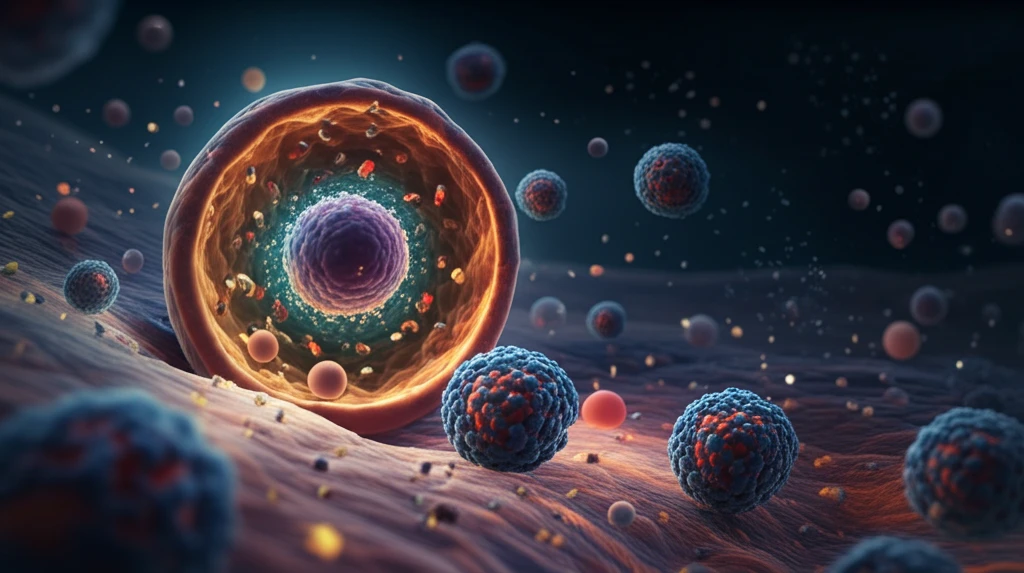
The Tiny Avengers: How Nanoparticles Are Revolutionizing Medicine from Within
"Unlocking the Secrets of Biodegradable Nanoparticles for Targeted Drug Delivery"
In the ever-evolving landscape of medical science, the development of smart drug delivery systems has captured the imagination of researchers worldwide. At the heart of this revolution lies biodegradable polymeric nanoparticles, microscopic vehicles capable of ferrying medications directly to diseased cells. This approach promises to minimize side effects and maximize therapeutic impact. Imagine tiny, biocompatible containers, loaded with life-saving drugs, navigating the intricate pathways within our bodies to precisely target tumors or repair damaged tissues.
Among the most promising materials for these nanoparticles is poly(L-lactic acid) (PLLA), a biodegradable polymer that has been extensively studied for its compatibility with biological systems. While the degradation of PLLA in various environments is well-documented, what happens when these nanoparticles enter individual cells remains a topic of intense scientific curiosity. How do they break down? What is the fate of the released drug? Answering these questions is crucial to unlocking the full potential of PLLA nanoparticles in medicine.
This article explores groundbreaking research into the intracellular degradation of PLLA nanoparticles, offering a glimpse into their fate within living cells. By tracking these particles and their components over time, scientists are gaining valuable insights that could pave the way for more effective and targeted therapies.
A Nanoparticle's Journey: Tracking PLLA Degradation Inside Cells

To observe the intracellular behavior of PLLA nanoparticles, scientists at the Max Planck Institute for Polymer Research designed a clever experiment. They created PLLA nanoparticles with an average diameter of approximately 120 nanometers and decorated them with magnetite nanocrystals. These nanocrystals acted as markers, allowing the researchers to track the nanoparticles' location and breakdown within mesenchymal stem cells (MSCs).
- Magnetite as a Marker: The magnetite nanocrystals served as a visual cue, revealing when the PLLA nanoparticles began to degrade and release their contents.
- Long-Term Monitoring: Observing the nanoparticles for two weeks allowed the researchers to capture both early and late stages of degradation.
- High-Resolution Insights: TEM provided ultrastructural details, revealing how the cells processed the nanoparticles.
The Future of Nanomedicine: Targeted Therapies and Beyond
This research underscores the importance of TEM studies in understanding the intracellular fate of nanoparticles. By combining TEM with other techniques like flow cytometry and confocal laser scanning microscopy (CLSM), scientists can gain a comprehensive picture of how cells interact with these tiny vehicles. These insights are crucial for designing more effective and targeted drug delivery systems. As our understanding of nanoparticle behavior within cells deepens, we can anticipate a future where nanomedicine plays an increasingly vital role in treating diseases and improving human health.
